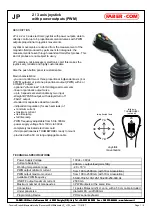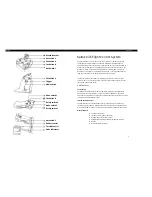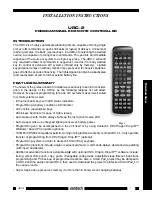
102
SPX advanced – description of parameters
SPX ADVANCED APPLICATION MANUAL
SVCH0203—October 2017 www.eaton.com
5.7.1 Limit warnings
Code
ID
Parameter
Notes
P1.7.1.1
507
DC-Braking current “DC-Brake current”
Defines the current injected into the motor during DC-braking. On start this parameter
is used together with DC Brake time to decrease the time when motor is able to
produce nominal torque. When DC brake current is applied to the motor the output
frequency is zero.
P1.7.1.2
516
DC-Braking time at start “Start DC-BrakeTm”
DC-brake is activated when the start command is given. This parameter defines for
how long DC current is given to the motor before acceleration starts. DC brake current
at start is used in order to magnetize the motor before running which will improve
torque performance at start. Needed time depends on motor size, value varying
between 100 ms to 3 second. The bigger the motor the more time is needed.
The default setting 0,00 s means that 200 ms is spent to magnetize motor. This 200 ms
can be set to zero with parameter “MakeFluxTime”. Activating flying start will disable
the DC brake functions at start.
P1.7.1.3
508
DC-Braking time at stop “Stop D-BrakeTm”
Defines the time to use DC brake at stop. The operation is different depending on the
selected stop mode (coasting or ramping).
Stop function = 0/Coasting:
After the stop command, the motor coasts to a stop without control of the drive.
With DC injection, the motor can be electrically stopped in the shortest possible time,
without using an optional external braking resistor.
The braking time is scaled according to the frequency at the moment of stop command.
If the frequency is the nominal frequency of the motor or higher, the set value of
DC braking time at stop is used as the braking time. When the frequency is below
the nominal frequency, the relation between the nominal frequency and the output
frequency at the time of stop command will determine the DC braking time. For
example, 50-hertz motor is running at 25 Hz when the stop command is given. The DC
brake time will be 50 % of the DC braking time at stop. If the frequency is below 5 Hz
the minimum DC braking time is 10 % of the DC braking time at stop.
DC braking is started after a short restart delay following the stop command if stop
function is coasting.
50 %
0 %
fn
Output frequency
Restart
delay
DC-Brake
time at
stop
Figure 5-13 . DC-Braking time when Stop mode = Coasting,
from nominal speed and 50 % of nominal speed .
Stop function = Ramp:
After the Stop command, the speed of the motor is reduced according to the set
deceleration parameters, to the speed defined with parameter DC braking frequency at
stop, where the DC braking starts.
















































